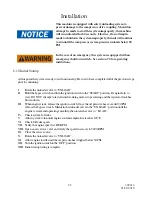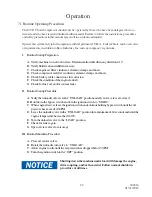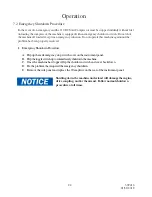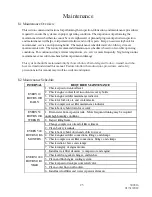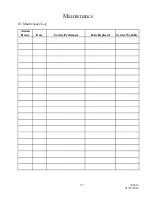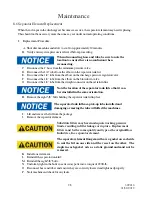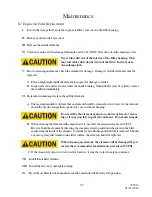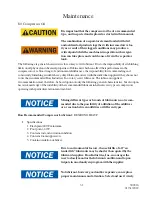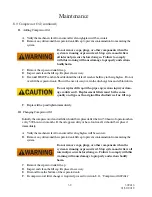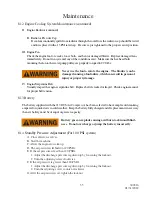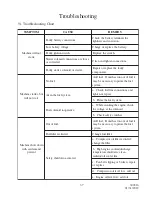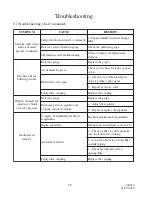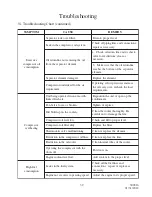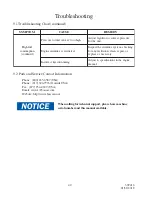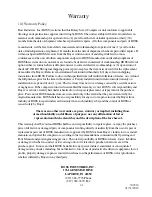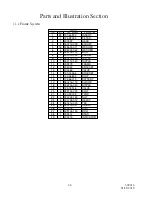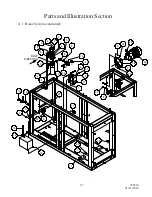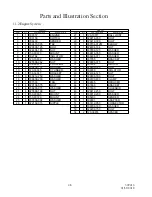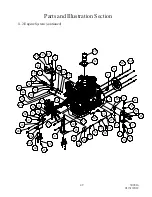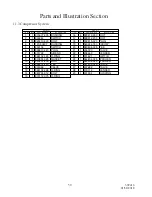
35
309416
01/31/2012
The battery supplied with the
210 DUS Air Compressor
has been selected to have ample cold cranking
amperes for quick starts in cold weather. Keep the battery fully charged and if replacement is necessary
the new battery must be of equal or greater capacity.
Battery gas can explode causing acid burn to skin and blind-
ness. Do not overcharge or jump the battery incorrectly.
8.13 Battery
Never use the fan to rotate the engine. The blade(s) can be
damaged causing a fan failure, which can result in personal
injury or property damage.
IV.
Engine Serpentine Belt
Visually inspect the engine serpentine belt. Replace belt if cracked or frayed. Check engine manual
for proper belt tension.
II.
Engine Radiator (continued)
B. Radiator Pressure Cap
If coolant continually spills from radiator through the overflow, the radiator cap should be tested
and/or replaced with a 13 PSI rated cap. Be sure cap is tightened to the proper secure position.
III.
Engine Fan
Check the engine fan for cracks, loose bolts, and bent or damaged blades. Replace damaged fans
immediately. Do not run system if any of the conditions exist. Make sure the hex head bolts
mounting the fan to the water pump pulley are properly torqued to 29 ft-lbs.
8.12 Engine Cooling System Maintenance (continued)
Maintenance
8.14
Standby Pressure Adjustment (For 100 PSI system)
A. Close all service valves.
B. Start the machine.
C. Allow the engine to warm up.
D. The air pressure will build to 120 PSIG.
E. If the air pressure is less than 120 PSIG.
1. Adjust the discharge pressure regulator up by loosening the locknut.
2. Turn the adjusting screw clockwise.
F. If the air pressure is greater than 120 PSIG.
1. Adjust the discharge pressure regulator up by loosening the locknut.
2. Turn the adjusting screw counter-clockwise.
G. After the air pressure is set, tighten the locknut.


